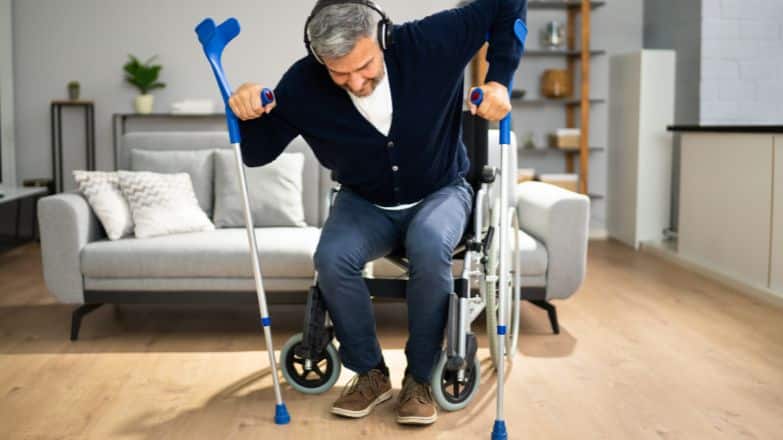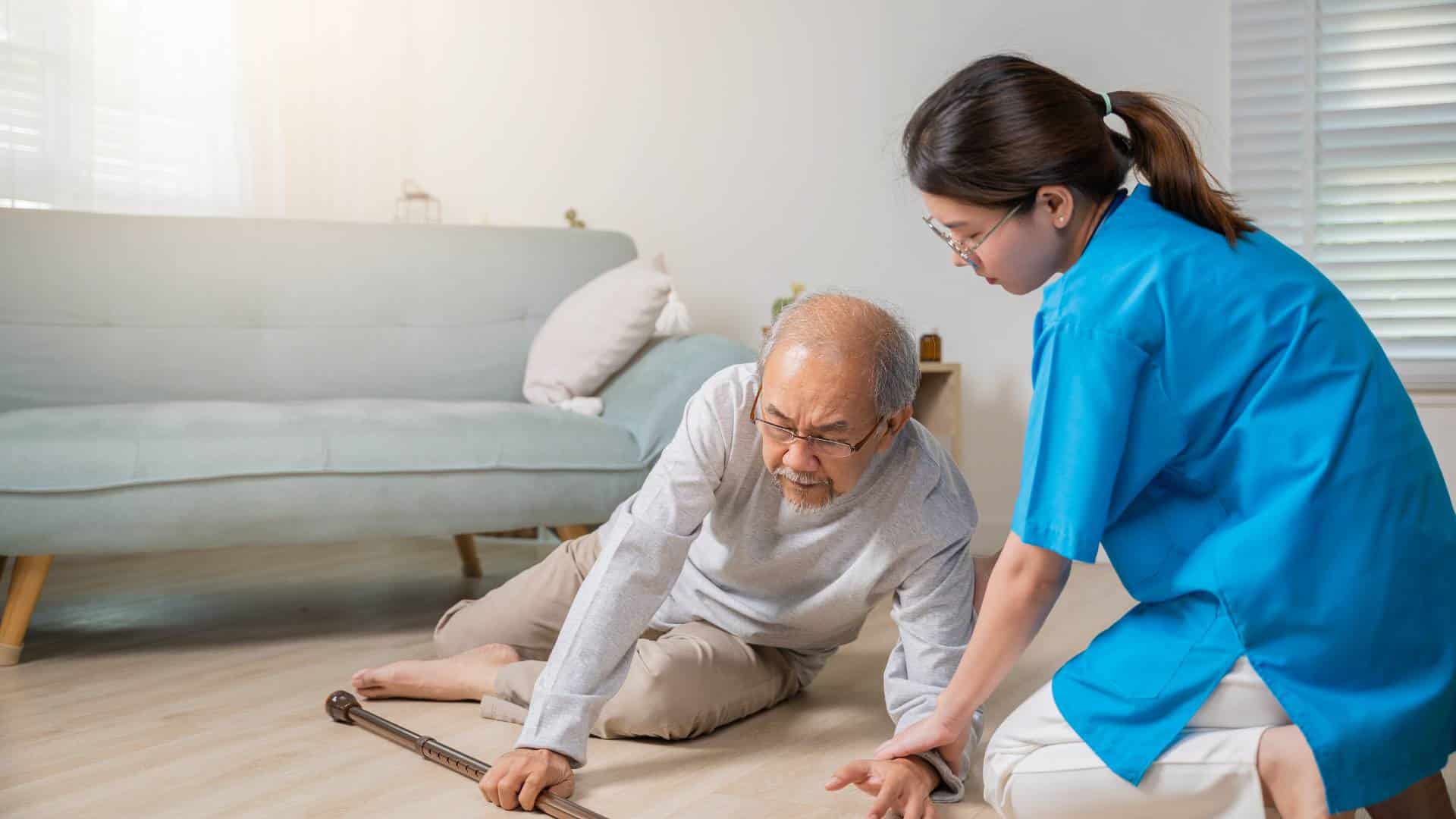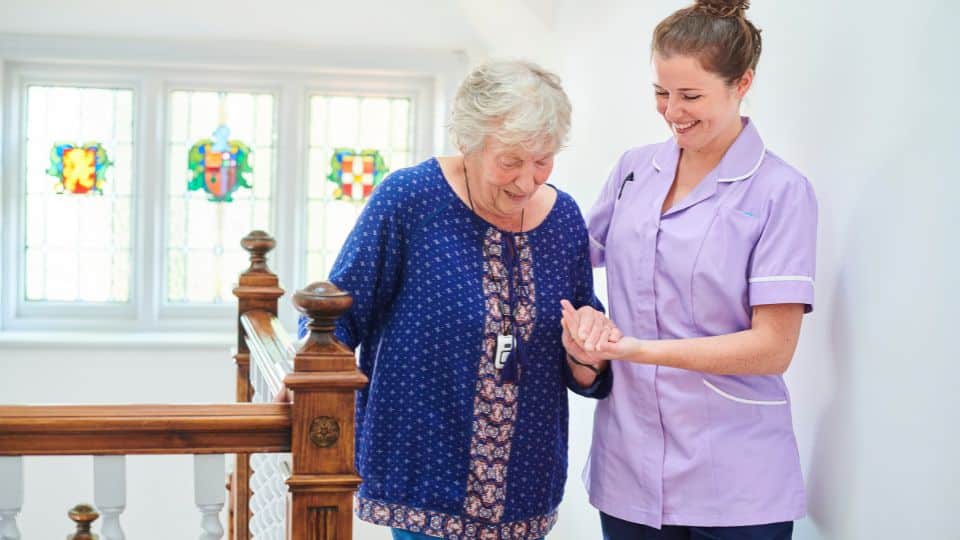As a caregiver or healthcare provider, it is important to take proactive steps in preventing falls among the elderly individuals under your care. Falls can have serious consequences, including injuries, hospitalizations, and a decline in overall health. In this article, we will explore practical strategies and tips for preventing falls in aged care settings. By implementing these measures, you can create a safer environment for your aging loved ones or clients. Let's discuss some effective ways to prevent falls at home for the elderly.
Understanding the Risk Factors for Falls
As we age, our bodies undergo various changes that can increase the risk of falls. It is important to be aware of these risk factors in order to take necessary precautions and prevent falls.
Identifying common physical and mental health conditions in elderly that increase fall risk
certain physical and mental health conditions can make the elderly more prone to falls. Conditions such as arthritis, Parkinson's disease, and dementia can affect balance and coordination, making falls more likely. It is important to be aware of these conditions and take appropriate measures to minimize the risk. Regular check-ups and consultations with healthcare professionals can help identify these conditions early on and develop a care plan tailored to individual needs.
Effect of medications on balance and coordination
Many medications commonly prescribed to the elderly can have side effects that impact balance and coordination. For example, certain types of sedatives, antidepressants, and blood pressure medications can cause dizziness or affect alertness. It is important to review medications regularly with a healthcare professional to identify any potential fall risks and explore alternative options if necessary.
Importance of eye sight and hearing in fall risk
Impaired vision and hearing can significantly increase the risk of falls in older individuals. Poor eyesight can make it difficult to navigate the environment and identify potential hazards, while hearing loss can affect balance and coordination. Regular eye exams and hearing tests are essential to identify any issues and address them promptly.
Impact of mobility and strength issues on fall risk
Decreased mobility and strength can make it more challenging for the elderly to maintain balance and recover from potential falls. Muscle weakness, joint pain, and difficulty with walking or climbing stairs can increase the likelihood of accidents. Regular exercise and physical therapy, tailored to individual capabilities, can help improve mobility and strength, reducing the risk of falls.

Securing the Living Space
Ensuring a safe living space is crucial for fall prevention. By removing potential tripping hazards and organizing furniture and appliances to maximize accessibility, we can significantly reduce the risk of falls.
Removing tripping hazards
Take a walk around the living space and identify any potential tripping hazards such as loose rugs, cluttered pathways, or uneven flooring. Remove these hazards or secure them to the ground to eliminate the risk. It is also important to keep floors clear of any objects, ensuring easy and safe navigation.
Correct placement of furniture and appliances for easy access
Arrange furniture and appliances in a way that allows for easy and safe movement. Avoid cluttering the space and ensure that pathways are clear. Consider the needs and limitations of the elderly individual, such as placing frequently used items within easy reach, to avoid unnecessary hazards.
Good lighting and clear paths to reduce fall risks
Proper lighting is crucial for fall prevention. Ensure that all areas within the living space are well-lit, especially hallways, stairs, and entrances. Use bright light bulbs and install nightlights in areas prone to darkness. Additionally, maintain clear paths throughout the space, removing any obstacles or obstructions that may impede movement.
Avoiding or securing loose rugs and carpets
Loose rugs and carpets can pose a significant fall risk, especially for individuals with mobility issues. It is advisable to remove such rugs altogether, but if they are necessary, make sure they are secured to the floor using double-sided tape or non-slip mats underneath.
Installing handrails and grips where necessary
Installing handrails and grips in areas such as staircases, bathrooms, and hallways can provide much-needed support and stability. These assistive devices can greatly reduce the risk of falls by providing a secure point of contact. Ensure that handrails are securely mounted and at an appropriate height for the individual.
Bathroom Safety Measures
The bathroom is a high-risk area for falls due to its slippery surfaces and confined spaces. Implementing safety measures in the bathroom can significantly reduce the risk of accidents.
Installing grab bars in the bathroom
Installing grab bars near the toilet, shower, and bathtub can provide support and stability, making it easier for the elderly to move around these areas. Ensure that the grab bars are securely mounted and capable of bearing weight.
Using non-slip mats in the shower or bathtub
Place non-slip mats in the shower or bathtub to prevent slipping. These mats have a textured surface that provides better traction, reducing the risk of falls. Regularly inspect and replace these mats if they show signs of wear or tear.
Enforcing good hygiene practices to prevent bacteria that can cause dizziness
Encourage good hygiene practices, such as regular cleaning of the bathroom facilities, to prevent the growth of bacteria and fungi that can lead to dizziness or infections. A clean and hygienic bathroom environment promotes overall safety and reduces the risk of falls.
Raising toilet seats
Raising the height of toilet seats can make it easier for the elderly to sit down and stand up, reducing the strain on their muscles and joints. This can be achieved by using raised toilet seats or adding toilet seat risers, which are readily available in the market.
Develop your skills and knowledge in support work for older people. Community Care Toolkit provides an online learning experience that helps you develop your skills and learn new ones.
Promoting Physical Activity and Exercise
Regular physical activity and exercise play a vital role in maintaining strength, balance, and overall well-being. Engaging in appropriate exercises can help prevent falls in the elderly.
Role of regular physical activity in strength and balance enhancement
Regular physical activity, such as walking, tai chi, or strength training exercises, can improve muscle strength, flexibility, and balance. These exercises help to maintain overall mobility and reduce the risk of falls. Encourage the elderly to engage in activities that they enjoy and are suitable for their physical abilities.
Best exercises for fall prevention
There are specific exercises that are particularly beneficial for fall prevention. These include balance exercises like standing on one leg or practicing heel-to-toe walking, strength exercises targeting the legs and core, and flexibility exercises to maintain joint mobility. Consult with a healthcare professional or a qualified exercise specialist to develop an exercise routine tailored to individual needs.
Professional assistance for exercise routines in the elderly
For individuals with specific health conditions, it is advisable to seek professional guidance when developing an exercise routine. Physical therapists or exercise specialists can provide expert advice and ensure that exercises are safe and appropriate for the individual's abilities. Regular monitoring of progress and adjustments to the exercise routine may be necessary.
Nutrition and Hydration
Proper nutrition and hydration are essential for maintaining good health and reducing the risk of falls. Adequate intake of nutrients and fluids can support muscle and bone health, as well as overall well-being.
Ensuring adequate nutrition for muscle and bone health
A balanced diet rich in nutrients, such as calcium and vitamin D, is crucial for maintaining strong muscles and bones. Encourage a diet that includes a variety of fruits, vegetables, whole grains, lean proteins, and dairy or non-dairy alternatives. Consult with a healthcare professional or a registered dietitian for personalized dietary recommendations.
Preventing dehydration that can lead to dizziness
Dehydration can cause dizziness and affect overall well-being. Encourage the elderly to drink an adequate amount of fluids throughout the day, especially during hot weather or when engaged in physical activities. Offer water, herbal teas, and other hydrating beverages regularly to ensure proper hydration.
Importance of regular meals
Regular meals provide the necessary nutrients to support overall health and well-being. Encourage the elderly to have balanced meals at regular intervals throughout the day. If necessary, consider working with a healthcare professional or a registered dietitian to develop a meal plan suitable for individual needs and preferences.

Correct Usage of Assistive Devices
assistive devices such as walkers, canes, and mobility aids can greatly improve stability and reduce the risk of falls. It is important to use these devices correctly and ensure a proper fit.
Proper use of walkers, cane and other mobility aids
If prescribed or recommended by a healthcare professional, assistive devices should be used as instructed. Learn how to properly operate and adjust these devices. Encourage the elderly to confidently use them and provide any necessary assistance or supervision as they navigate their surroundings.
Professional fitting for assistive devices
Ensure that assistive devices are properly fit and adjusted to the individual's height, weight, and needs. Improperly fitted devices can hinder rather than improve stability and mobility. Seek professional assistance, such as consultation with a physical therapist or an occupational therapist, to ensure a correct fit.
Tips for using these devices safely and efficiently
Provide guidance to the elderly on how to use assistive devices safely and efficiently. Encourage them to maintain good posture while using these devices, take their time when walking, and be mindful of their surroundings. Regularly inspect the devices for any signs of wear or damage and arrange for repairs or replacements as needed.
Fostering Good Sleep Habits
Adequate and quality sleep is essential for overall well-being and can significantly reduce the risk of falls. Encouraging good sleep habits is important for fall prevention.
Link between sleep deprivation and fall risk
Sleep deprivation can impair cognitive function, balance, and coordination, increasing the risk of falls. Lack of sleep can also lead to fatigue and decreased alertness, further raising the risk. Emphasize the importance of quality sleep and address any underlying sleep issues promptly.
Tips for improving sleep quality
Promote good sleep hygiene by establishing a regular sleep routine. Encourage the elderly to maintain a consistent sleep-wake schedule, create a comfortable sleeping environment that is free from distractions, and practice relaxation techniques before bedtime. Avoid the consumption of caffeine or alcohol close to bedtime, as these substances can interfere with sleep quality.
Addressing sleep disorders like sleep apnea in the elderly
Sleep disorders, such as sleep apnea, are common among the elderly and can significantly affect sleep quality. If sleep disturbances are suspected, encourage the elderly to consult with a healthcare professional for a proper diagnosis and treatment. Treatment options may include the use of continuous positive airway pressure (CPAP) devices or oral appliances.
Regular Health Check-ups and Medication Review
Ongoing health check-ups and medication review are essential for fall prevention in the elderly. Regular assessments can identify potential risks and ensure that medications are being used appropriately.
Role of preventative health check-ups in risk assessment
Regular health check-ups, including physical examinations and screenings, can help identify potential health risks and address them promptly. These check-ups can also assess factors such as blood pressure, balance, and cognitive function, which have a direct impact on fall risk.
Review of medication side-effects that could increase fall risks
Regular review of medications by a healthcare professional is crucial to identify any potential side effects that may increase the risk of falls. Discuss any concerns about medication side effects and explore alternative options, if possible. Ensure that the elderly are aware of the potential risks and benefits associated with their medications.
Vision and hearing tests
Regular vision and hearing tests are important for fall prevention. Impaired vision and hearing can significantly increase the risk of falls. Encourage the elderly to have their eyes and ears checked regularly by healthcare professionals. These tests can detect any issues and prompt appropriate interventions.

Proper Footwear and Clothing
The choice of footwear and clothing can have a significant impact on fall prevention. Encourage the elderly to prioritize safety and comfort when selecting their attire.
Choosing non-slip footwear
Ensure that the elderly have proper footwear that provides adequate support and traction. Opt for shoes with non-slip soles and good arch support. Avoid high heels, open-back shoes, or shoes with worn-out soles, as they can increase the risk of trips and falls.
Avoiding loose clothing that can trip you over
Loose clothing, particularly long and flowing garments, can become entangled with the feet and cause trips or falls. Encourage the elderly to wear well-fitting clothing without excessive loose fabric. Additionally, avoid wearing garments with long, trailing hemlines that can get caught underfoot.
Importance of well-fitting clothes and shoes
Ill-fitting clothes and shoes can hinder mobility and increase the risk of falls. Encourage the elderly to choose clothes and shoes that fit properly and allow for comfortable movement. Avoid tight or restrictive clothing that can limit mobility or cause discomfort.
Building Awareness and Preparedness
Creating awareness about fall risks and taking proactive measures for prevention are essential for fostering a safe environment for the elderly. Caregivers and healthcare professionals play a crucial role in educating and preparing individuals and their families.
Educating elderly and caregivers on fall risks and prevention
Promote education about fall risks and prevention strategies among the elderly and their caregivers. Provide informational materials, workshops, or one-on-one sessions to raise awareness about common causes of falls and the steps that can be taken to minimize the risk. Empower individuals and their families with knowledge and resources to create safer living environments.
Creating a fall emergency plan
Having a well-defined fall emergency plan is critical in the event of an accident. Establish protocols for immediate response, such as who to contact and what steps to take in case of a fall. Share this plan with the elderly individuals, their caregivers, and relevant healthcare professionals.
Use of technology and alarm systems for fall detection
Technology can play a significant role in fall prevention. Consider utilizing alarm systems or wearable devices equipped with fall detection capabilities. These devices can alert caregivers or emergency services in the event of a fall. Explore available options and consult with healthcare professionals for recommendations.
In conclusion, falls can have serious consequences for the elderly, but with proper knowledge, awareness, and proactive measures, they can be prevented. By understanding the risk factors for falls, securing the living space, implementing bathroom safety measures, promoting physical activity and exercise, ensuring proper nutrition and hydration, using assistive devices correctly, fostering good sleep habits, regular health check-ups and medication reviews, choosing appropriate footwear and clothing, and building awareness and preparedness, we can create safer environments and reduce the risk of falls for our aging loved ones or clients. Let us take the necessary steps to minimize fall risks and ensure the well-being of the elderly population under our care.
Develop your skills and knowledge in support work for older people. Community Care Toolkit provides an online learning experience that helps you develop your skills and learn new ones.
